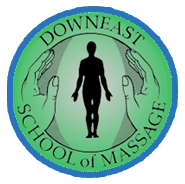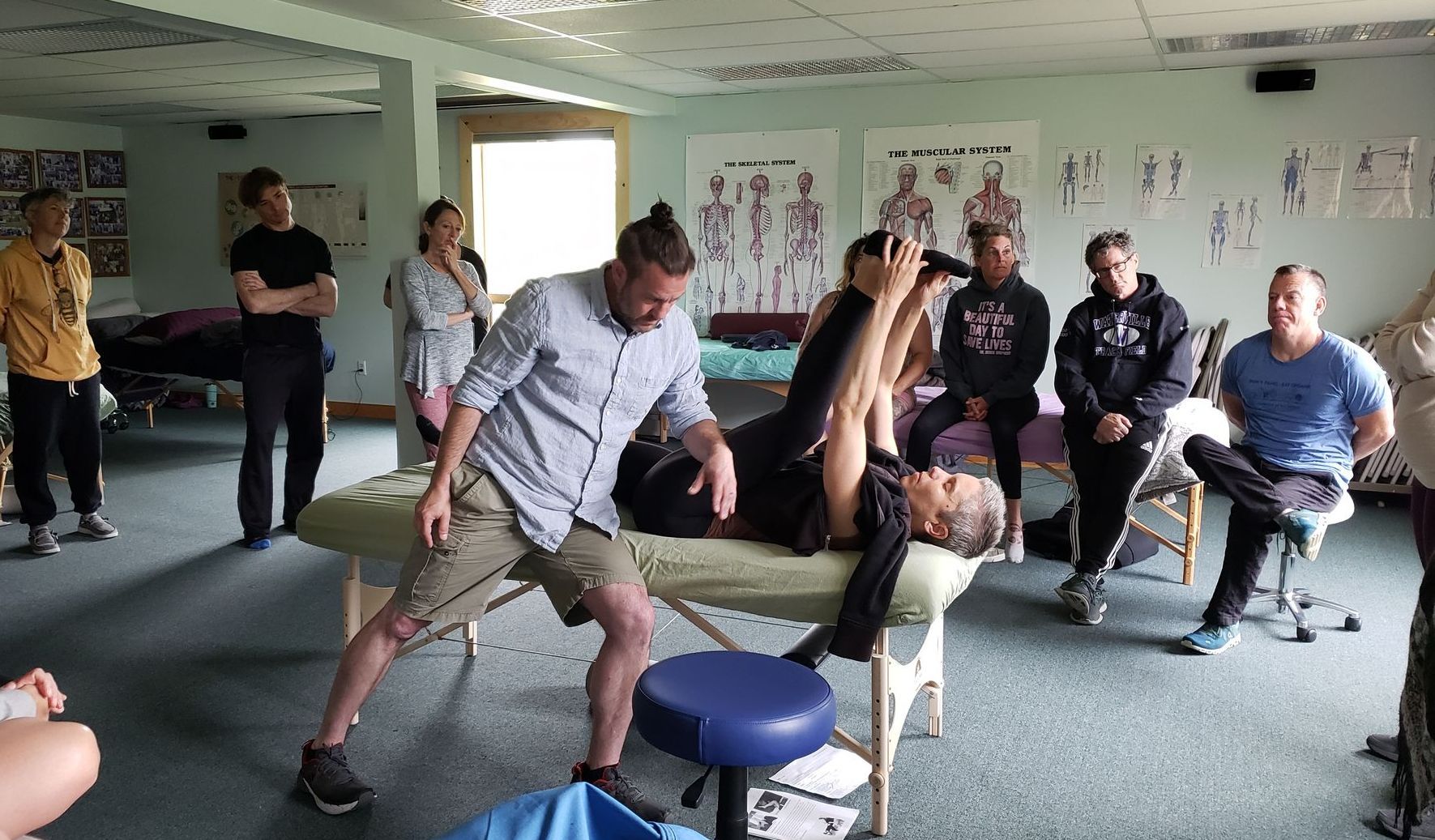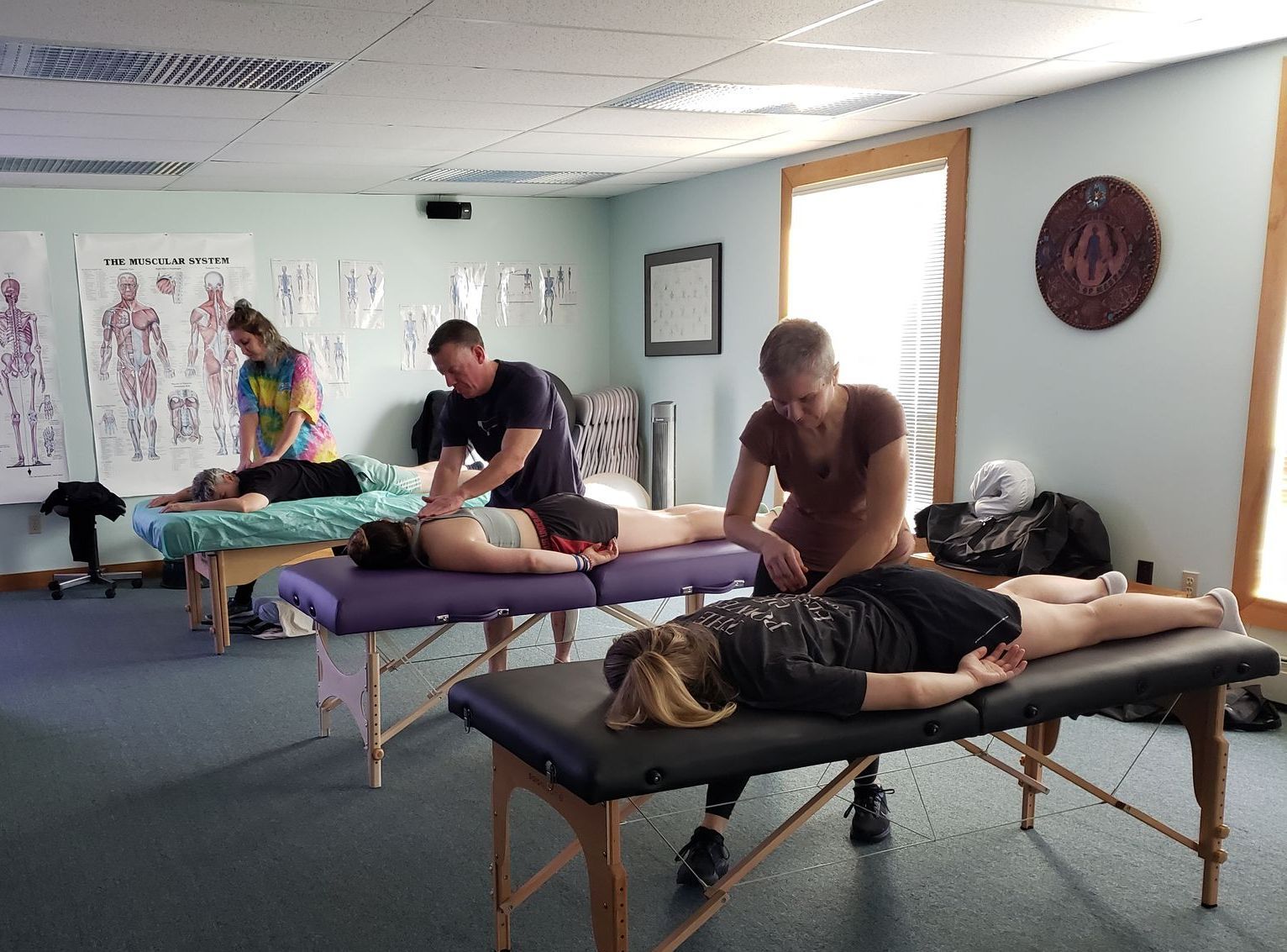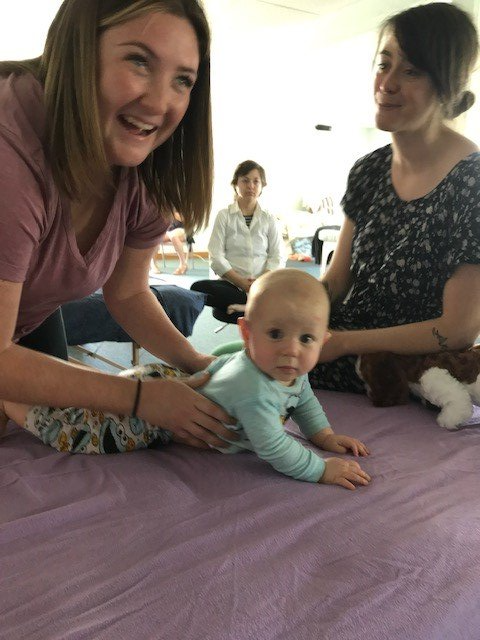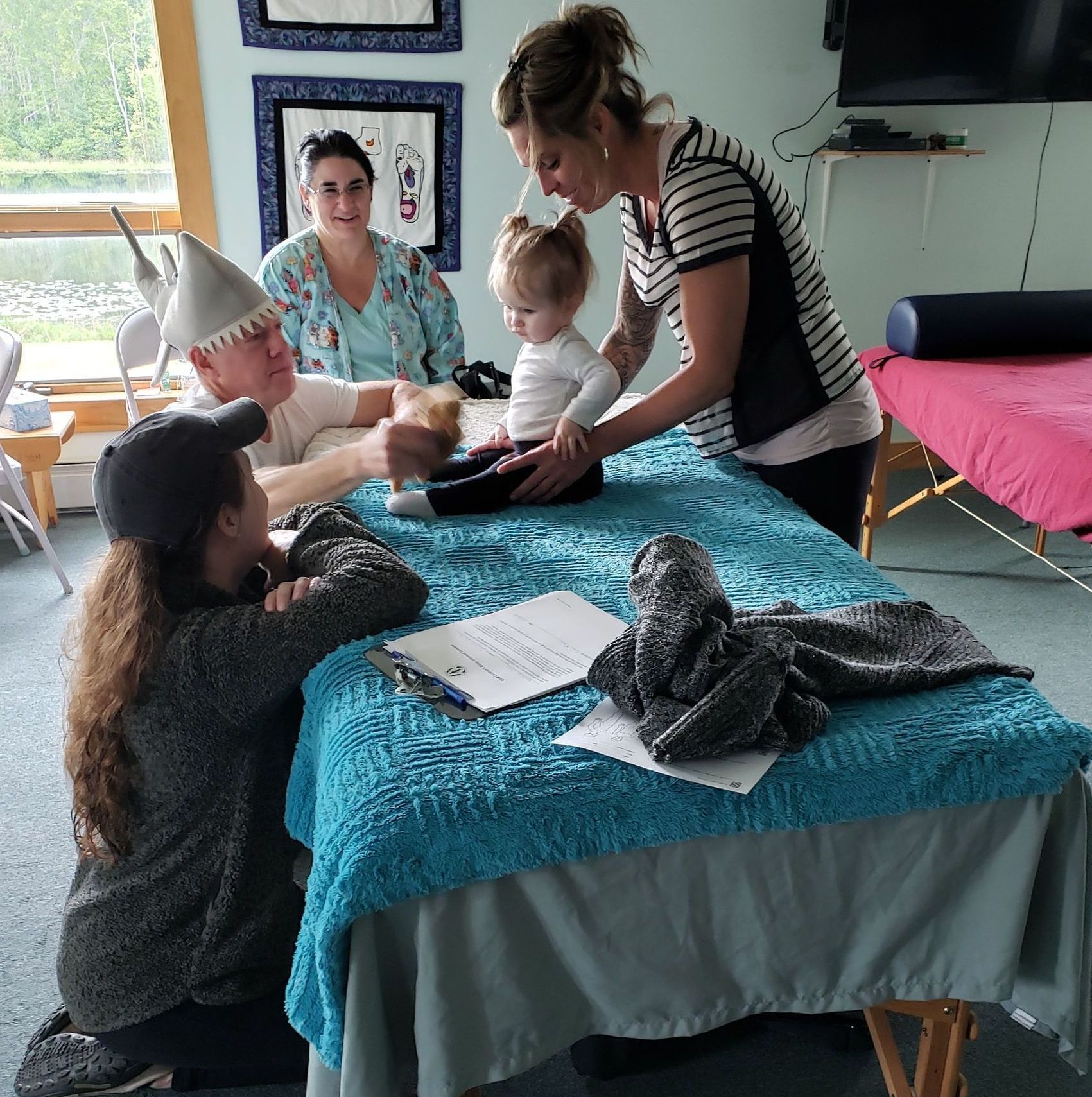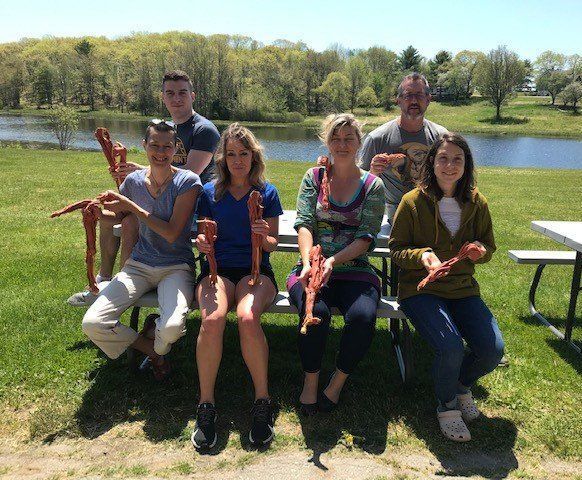Massage And Related Courses
*Therapeutic Massage Curriculum Objectives
Therapeutic Massage (177 Hours)
This is the foundation of techniques taught at DSM. Holistically presented in theory and technique, Swedish is interwoven with other representations of manipulative, soft tissue therapies for the purpose of individualizing treatments. Students will become competent in techniques and learn theory, contraindications, therapeutic benefits, effects, and history of Therapeutic Massage and Bodywork in relationship to manipulative therapies. Advanced techniques are practiced and supported by Kinesiology. Special classes on headaches and blindfold massage are a part of the massage course curriculum. Video mechanics classes are a support arm of all table technique classes. Students are videotaped so they can actually see themselves practice massage. DSM invites pregnant women to participate in the bi-annual Pregnancy Massage Clinic. Students learn contraindications and physical support mechanisms by lecture and technique, as well as by demonstration and practice, before the Pregnancy Massage Clinic. The clinic gives the student the opportunity to practice, under supervision, with women in various stages of pregnancy. In another supervised setting, students have the opportunity to practice massage techniques on children at the annual community-supported Children’s Massage Clinic. Students learn just how much children love massage! For the elder population, students will learn basic information, contraindications, and techniques to work with the elderly. Out-of-class work includes long hours, a massage project, case studies, homework, and four treatments from professional, working therapists. Students must have a 75% grade average to pass Therapeutic Massage and complete all course requirements.
*Centering Curriculum Objectives
Centering Techniques for Body/Mind (6 Hours)
This course offers students a practical philosophy and set of techniques which help to bring the body/mind into balance, thus promoting physical and emotional healing, relaxation, and well-being. Students will learn concepts and techniques that can be easily applied and integrated into their personal and professional lives. Content includes a variety of breathing and centering techniques, basic movement techniques, mindfulness, biofeedback, self-hypnosis, visualization and imagery, and Concept of 100 Percent Responsibility. Attendance and participation make this course Pass/Fail.
*Introduction to Self-Care and Professional Development Course Objective
Introduction to Self-Care and Professional Development (9 Hours)
Facilitated small-group discussions explore such topics as boundaries, injury prevention, sexuality, emotional release, trauma issues, burnout, dual relationships, money, transference, countertransference, supervision, and communication. The experiences of participants and working professionals are used to gain insights into the complexity of client/therapist relationships. As a formal commitment to good physical health, the student is required to perform and log appropriate forms of exercise during the school year. Attendance, participation, and a paper written and presented are all necessary for completion. This is a Pass/Fail course.
Clinic (71 Hours)
Valuable in-class hours offer the student the opportunity to work with the public in a supervised setting. Each year DSM advertises to the community that student massage is available for a reasonable charge, and the response has made the clinic a success. Clinic supervisors work directly with the students, helping with technique, checking medical histories and SOAP notes, developing treatment goals, and monitoring student body mechanics. Clinic participants give feedback to students through evaluation forms. Participation and attendance make this course Pass/Fail.
*Deep Tissue Therapy and Static & Motion Analysis Curricula Objective
Deep Tissue Therapy (36 Hours)
This course includes an introduction to rehabilitative techniques used to treat chronic pain produced by Myofascial Pain Syndrome (MPS) and muscular dysfunction from injury. The foundation of this class is the research of Ida Rolf, Dr. Janet Travell, Thomas Myers, and Paul St. John, and the effective techniques they developed. Subsequent work done by other practitioners in the field of therapeutic bodywork is incorporated. The techniques used for Deep Tissue Therapy include energy work, exercises in tissue-listening, myofascial release, a variety of energizing movement techniques for personal centering, and client re-education. Participation and attendance make Deep Tissue Therapy Pass/Fail.
Static & Motion Analysis (12 Hours)
This course will present a basic overview of the techniques and clinical reasoning behind the assessment of static and motion analysis. Students will learn how to use visual cues in assessing clients’ postural holding patterns. Students will participate in gait analysis and differentiate holding patterns through an active and passive range of motion testing. This is a practical participation class that links Swedish, Kinesiology, and Deep Tissue courses. It is Pass/Fail.
*Reflexology Curriculum Objective
Reflexology (6 Hours)
Students will be able to incorporate Reflexology into a massage treatment. Specific techniques, zone areas, and sequence are taught in order to understand reflexology methods, history, and philosophy. Reflexology is Pass/Fail.
*Hydrotherapy Curriculum Objective
Hydrotherapy (12 Hours)
Hydrotherapy is the use of water in solid, liquid, or gaseous form. Students experience and learn functional applications of a sauna, spa, steam, ice, paraffin, and hydro collator as used in massage therapy. It includes principles of hydrotherapy and contraindications, as well as salt glows, fomentations, and cold packs. Hydrotherapy is a Pass/Fail course.
*Oncology Massage Curriculum Objective
Introduction to Oncology Massage (9 Hours)
This introductory class will enhance the student’s knowledge of massage therapy concepts that will be applied in the Oncology Massage setting through lecture, open discussion, and hands-on experience. Each student will have the opportunity to experience comfort touch and receive information on lymphedema, thrombosis, with additional discussions about the emerging field of Oncology Massage. Attendance and participation make this class Pass/Fail.
*Introduction to Acupressure Curriculum Objective
Introduction to Acupressure (6 Hours)
For philosophy and diversity, this mandatory course gives the student an introduction to an Eastern bodywork. Students will be introduced to the basic premise of Oriental medicine, meridian lines, Yin/Yang, acupoints and Qi with lecture and a demonstration. Attendance and participation make this course Pass/Fail.
*Sports Massage Curriculum Objective
Sports Massage (24 Hours)
This 24-hour course is taught over two weekends and introduces students to the exciting world of working with active people—the casual fitness enthusiast; adolescent, high school, and collegiate athletes; recreational and weekend competitors; masters and senior athletes; the disabled athlete, and of course, the elite and professional sportsperson. The course includes pre- and post-event massage, joint mobilization, thermal problems, proprioceptor neuro muscular facilitation, cryotherapy, and other techniques with supervised practical time. Attendance and participation make this course Pass/Fail.
*CranioSacral Therapy Curriculum Objective
CranioSacral Therapy
(6 Hours)
This 6-hour course will introduce the healing modality of CranioSacral Therapy through lecture and hands-on experience. In the early 1900s, the CranioSacral system was discovered by William G. Sutherland, DO, who believed that there was movement in the cranial bones. Conventional anatomical knowledge and teaching believed that cranial bones were movable only in young infants and that these bones were solidly fused in adulthood. In the early 1970s, the College of Osteopathic Medicine at Michigan State University began a series of studies to prove or disprove cranial bone movement. The MSU team proved and measured the frequency and amplitude of cranial bone movement in adult living primates. Dr. John Upledger, a member of the MSU cranial team, has since been developing techniques for evaluation and treating the dural membranes. CranioSacral Therapy is a very gentle hands-on technique to detect and correct imbalances or restrictions in the CranioSacral system, thereby encouraging one’s own natural healing to be augmented. Attendance and participation make this a Pass/Fail course.
*Introduction to Chronic Pain Curriculum Objective
Introduction to Chronic Pain (3 Hours)
Lecture teaches a basic understanding of the definition of chronic pain and how to support clients who deal with it daily. Chronic pain is the category where we as massage therapists are the most successful but have the most failure. Understanding chronic pain will be a life-long goal in your practice. Attendance and participation are required for a Pass/Fail grade.

